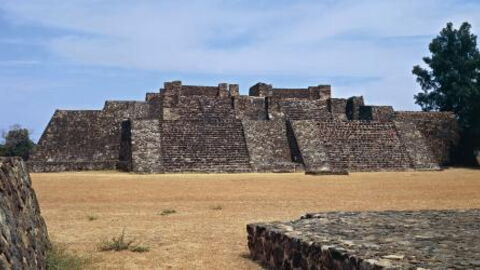Thistemple of a somewhat dubious taste was found by archaeologists in Mexico. In the state of Puebla in central Mexico, researchers from the Institute of Anthropology and History have discovered a temple dedicated to Xipe Totec.
Discover our latest podcast
While digging in the ruins of a complex built by the Popolocas in the eleventh century, the researchers found several representations of this god of fertility. Thus, the experts found two skull-shaped sculptures as well as a stone torso.
Skinned victims
It possessed the peculiarity of having an extra hand dangling from an arm, suggesting that the god was dressed in the skin of a sacrificial victim.
The priests of the time glorified Xipe Totec by skinning human victims and wearing their skins, a ritual meant to ensure fertility and regeneration.
Xipe Totec was one of the most important gods of the era before the Spanish invasion, which dates back to 1519.
The first discovery of a temple
This is not the first time that Xipe Totec has been talked about, since many descriptions have already been found in writings, including among the Aztecs. But neither a temple dedicated to his worship, nor a sculpture representing him had ever been found. Archaeologist Susan Gillespie of the University of Florida told Detroit News:
A temple dedicated to this deity does not necessarily indicate that it was the place of sacrifice. The practices of the Aztecs were to make the sacrifice in one place and to keep the skins in another after they had been carried by people for a few days.
'It could be the temple where they were stored, which would make this place even more sacred,’ she continues. The stories about the ritual recount a death after a fight similar to those of the gladiators, the victims are not necessarily designated at random.
An altar discovered
The layout of the site that the researchers found would support the hypothesis that the sacrificed were killed on a platform similar to an altar.
During the excavations, the researchers discovered two sacrificial altars, the three stone sculptures and other architectural elements in the middle of a pyramidal base in the Ndachjian-Tehuacán complex.















